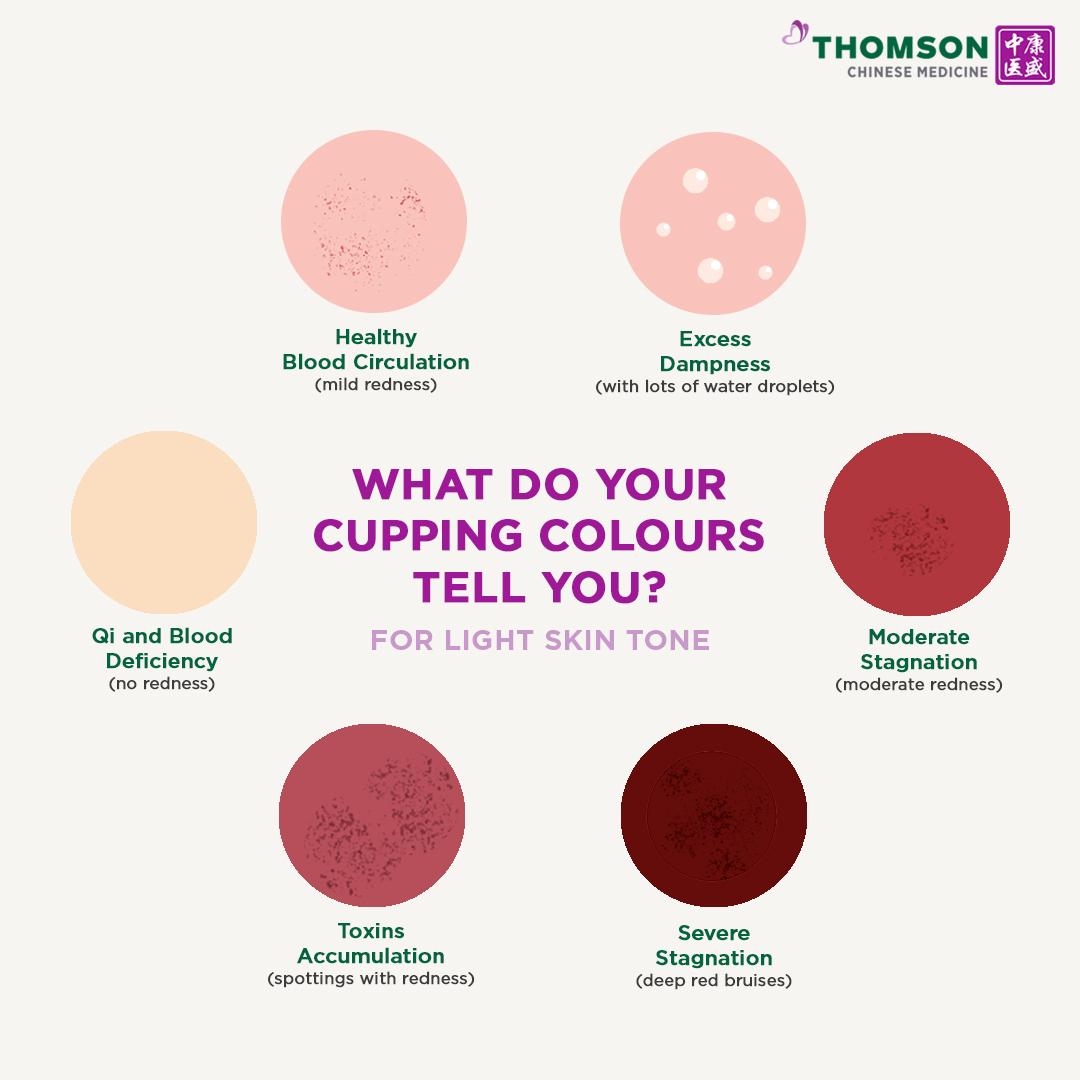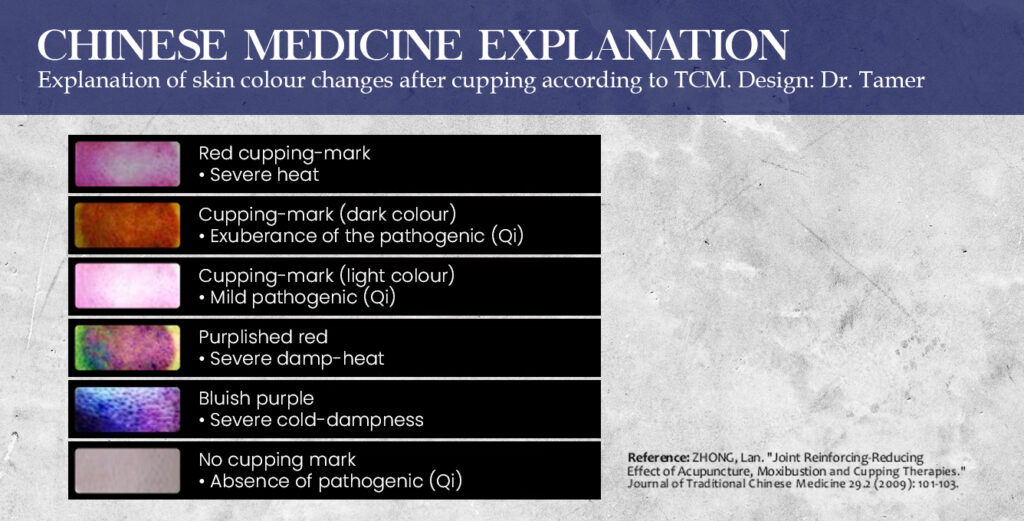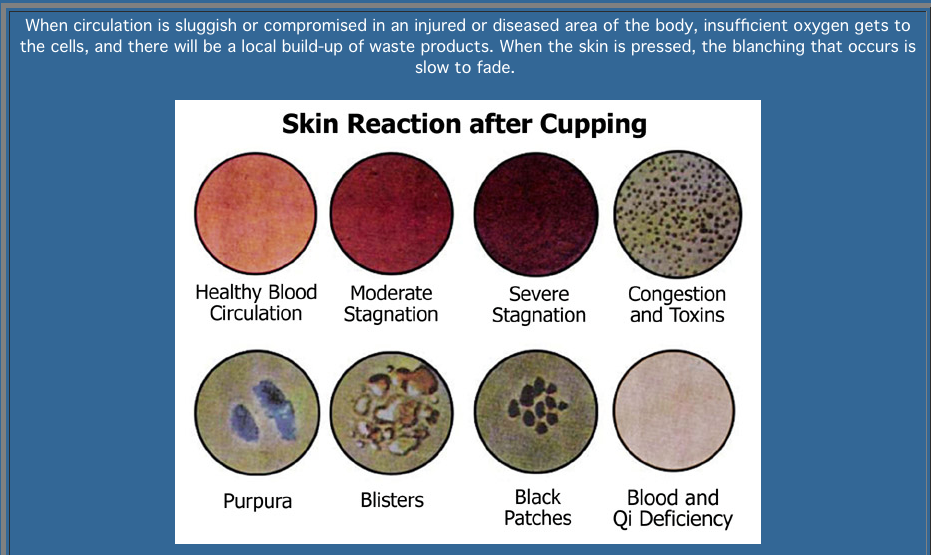
What Are Cupping Marks Color Meaning Are They Painless
Cupping will allow the body to deal with the stagnation more effectively and promote health to the area. A pale or white mark indicates that an area has a lack of function and probably isn't performing properly. Using cupping techniques, a therapist can help restore better function to the area. Cupping that leaves a bright fresh red color.

35 Cupping Points Chart Oberteil35 Cupping Points Chart Oberteil
To understand what the cupping marks are telling you about your body, you must base it off the color of the first day. Shades of Red: Active Circulation and Energy. Vibrate shades of red often indicate good blood circulation and a healthy flow of energy in the treated area. This color suggests that the therapy has successfully increased blood.

Cupping Colors (Marks Chart) — (Health Coach’s Advice)
Cupping Marks Chart For Colors. The following are some typical interpretations of colors connected to cupping marks: Light to Medium Pink Color. A common outcome of cupping marks lies within the range of pinkish colors which indicate a healthy body with little to no toxins depending on the severity of the pink color. In many cases, the color reaches its most vivid in four to five days and.

Massage Cupping Therapy SunRise Healing Center
Cupping therapy is an ancient healing method that may ease back pain, neck pain, headaches and other issues. It uses suction to pull on your skin and increase blood flow to the affected area. Cupping causes bruising and can lead to skin infection. There's mixed evidence on the benefits of cupping, but the treatment risks are generally low.

What Do Dark Cupping Marks Mean WHATDOSH
The most common side effect of cupping therapy is the presence of cupping marks and the discoloration of the skin. The bruising of the skin is regarded as a part of the therapy session in many cases. There are two common explanations for the marks that are left behind after the cupping therapy. The more obvious one lies in the blood circulation.

How to Locate Hijama / Cupping Points on the Front of the Body Hijama
Cupping has gained popularity in recent years for its potential health benefits and its distinctive marks.

What Do Your Cupping Colours Tell You? Thomson Chinese Medicine
But fret not! It is common for cupping to leave distinctive small, circular bruises on the areas where the cups were applied and it is usually painless. These cupping marks are discoloration of the skin due to broken blood vessels just beneath the skin, much like a bruise. This indicates the level of blood and Qi stagnation, toxin accumulation.

What is Cupping Therapy? A Closer Look
Purple. Purple markings left by cupping therapy suggest a significant blockage or blood stagnation in the treated area. The darker the purple hue, the more severe the blockage or stagnation. These marks may indicate a long-standing issue or chronic pain. Cupping therapy aims to improve blood flow, restore energy balance, and remove blockages.

Hijama Points , Cupping points on the body alternative medicine http
These cupping marks are discoloration of the skin due to broken blood vessels just beneath the skin, much like a bruise. This indicates the level of blood and Qi stagnation, toxin accumulation, or dampness accumulation in your body. The color and pattern of the marks reflect the level of stagnation in that area.

Cupping Therapy Cupping therapy, Cupping points, Massage therapy
Cupping is a therapy used in traditional Chinese medicine (TCM) to remove blockages and stimulate the flow of qi. Cupping can be used to treat sore backs, calm swelling, and eliminate "dampness" and toxins, even fatigue. Overall, cupping helps to balance the yin and yang in our body, strengthen our immunity, and treat diseases.

Home Cupping Therapy
Dark red to pink. Whenever you have darker tones on the cupping marks chart, that shows you have a mild to moderate blood stagnation. These marks will be there for a longer amount of time, up to 12 days in some cases. This can appear especially in the case of a user that doesn't perform cupping therapy that often.

What Tell You the Colour of Cupping Marks About Your Body
Cupping Cupping Marks can le and Explanations ve skin marks, ne of the commonest side effects of CT. Skin mark is usually round red to purple in color. the and pertinent the factors cupping therapy studies affecting done (Hijama) in these this field. skin changes and standardize its The article after also cupping practice discusses therapy.

Cupping Therapy for better health
Cupping is a practice used in traditional medicine in several parts of the world, including China and the Middle East. It involves creating suction on the skin using a glass, ceramic, bamboo, or plastic cup.. Cupping leaves temporary marks on the skin. The origin of these marks should be explained to health care providers so that they won.

Cupping Therapy A Healing Point Acu Center
Geeks only! Science facts & health benefits behind cupping marks explained with Kate Moore.

Skin reaction after Hijama (Cupping) When circulation is sluggish or
Cupping pulls stagnation out of the deep tissue and brings it to the skins surface, usually in the form of a discoloration. The most common and unfortunate misconception about the marks left behind from cupping is that the therapy can result in a bruise. These discolorations are not bruises. A bruise appears on the skin due to an impact trauma. An injury causes capillaries to burst, trapping.

Cupping Points Diagram
After a cupping therapy session, patients may notice residual ecchymosis on the skin, commonly referred to as cupping marks. These marks result from the suction applied during cupping and manifest as circular or oval-shaped areas of skin discoloration. The color of the marks may vary, ranging from light red or pink to dark purple, depending on.